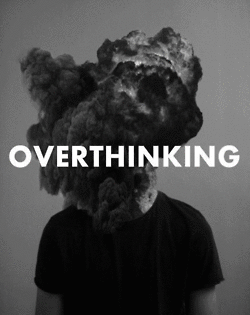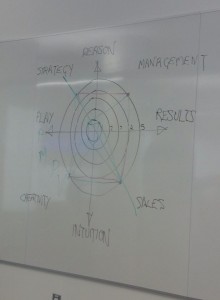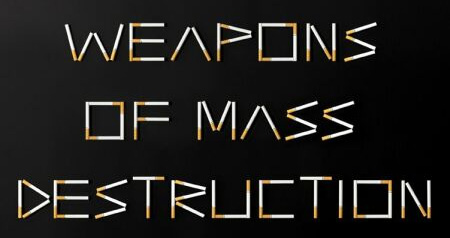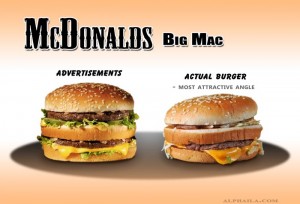FINAL THOUGHTS
Dec 5th, 2014 by haileyrae
One of the very first lectures in this class we were asked to do an exercise. We were instructed to empty our minds and ask ourselves a question, “How do I think?” Well…I had never really asked myself that question. It took me a moment to even understand what that question was actually asking. I had to THINK about how I THOUGHT, because I didn’t know. How come I had never been asked to do that before? Looking back at that I realized that that is a major flaw in my educational upbringing – no one teaches us to learn about ourselves. I didn’t write anything during that exercise. I didn’t know how. But now, at the end of this term, I think I can.
 I analyze. I am deliberate in my thinking and my mind never ceases to move. It is always churning…the thoughts a nonstop flow of ideas, planning, decision making, feelings, emotions, insecurities, fears, joys, judgments, encouragement and insights. I wish I could escape from my thinking at times. My never-ending thinking gets in the way of quality contemplation or intuitive heart choices. I can break down situations, problems and events like there is no tomorrow. I overanalyze everything. I take apart issues like a small and intricate wristwatch, slowly but surely and expertly, delving deep into every fine, small, but vital and important piece of a scenario. Sometimes certain scenarios should be left alone, though. And if I’d listen to my intuition, I’d know that. But that is exactly what I’ve come to realize. That is my greatest takeaway from this class. I’ve learned so much about decision making in business and letting my creative energy flow. Allowing ideas that I would normally bury deep within my gut to bubble up to the surface. Because that’s what this class encouraged. That’s what this class inspired. It motivated me to be the best version of myself. It allowed me to learn about myself. It created space for me to share my ideas with others without fear of judgment, and in return I did not judge others. I believe that because of the positive and open environment that Moira initiated, it permitted classmates to really get to know and support each other. I’ve learned how wonderful it can be to work on a school project with strangers turned friends.
I analyze. I am deliberate in my thinking and my mind never ceases to move. It is always churning…the thoughts a nonstop flow of ideas, planning, decision making, feelings, emotions, insecurities, fears, joys, judgments, encouragement and insights. I wish I could escape from my thinking at times. My never-ending thinking gets in the way of quality contemplation or intuitive heart choices. I can break down situations, problems and events like there is no tomorrow. I overanalyze everything. I take apart issues like a small and intricate wristwatch, slowly but surely and expertly, delving deep into every fine, small, but vital and important piece of a scenario. Sometimes certain scenarios should be left alone, though. And if I’d listen to my intuition, I’d know that. But that is exactly what I’ve come to realize. That is my greatest takeaway from this class. I’ve learned so much about decision making in business and letting my creative energy flow. Allowing ideas that I would normally bury deep within my gut to bubble up to the surface. Because that’s what this class encouraged. That’s what this class inspired. It motivated me to be the best version of myself. It allowed me to learn about myself. It created space for me to share my ideas with others without fear of judgment, and in return I did not judge others. I believe that because of the positive and open environment that Moira initiated, it permitted classmates to really get to know and support each other. I’ve learned how wonderful it can be to work on a school project with strangers turned friends.
To be transparently honest, this has been the best class I have taken at University so far. It gave me confidence and broadened my perspective on all the things I could accomplish if I just released from my doubts – my fear of outside criticism and failure. I learned that none of that matters. All that matters is that I put my heart and soul and intuition into the equation. Throughout my years at school I have relied on my logical thinking to overcome any problem or situation. This class helped to restructure my thinking, helped to communicate that it isn’t always about what we think is best, but what we feel is best.
 I especially loved one of our guest speaker’s presentation that involved the design compass. It was reassuring to have a successful businessperson reinforce the concept of commerce being a combination of both logic and intuition, and admitting that business does take heart. In fact it works better when a little soul is added. I have unfortunately invented a bit of a stigma around business ever since I arrived at University, and witnessed the way my cutthroat classmates operated amongst themselves and their opinions on profit and money. I went into commerce to foster the marriage of sustainability and business. This class, and everyone involved, provided a great comfort to me and quite frankly, renewed my faith in the direction of humanity. I feel silly writing that but I’m being honest – University is hard and it’s even harder when you think about the kind of people who don’t care about anything except for their own personal gain. Hearing Moira and the TA’s and the guest speakers and my colleagues brainstorm about the future of our planet and the wellbeing of our population, helped remind my why I chose to be in business in the first place. And for that, I thank them.
I especially loved one of our guest speaker’s presentation that involved the design compass. It was reassuring to have a successful businessperson reinforce the concept of commerce being a combination of both logic and intuition, and admitting that business does take heart. In fact it works better when a little soul is added. I have unfortunately invented a bit of a stigma around business ever since I arrived at University, and witnessed the way my cutthroat classmates operated amongst themselves and their opinions on profit and money. I went into commerce to foster the marriage of sustainability and business. This class, and everyone involved, provided a great comfort to me and quite frankly, renewed my faith in the direction of humanity. I feel silly writing that but I’m being honest – University is hard and it’s even harder when you think about the kind of people who don’t care about anything except for their own personal gain. Hearing Moira and the TA’s and the guest speakers and my colleagues brainstorm about the future of our planet and the wellbeing of our population, helped remind my why I chose to be in business in the first place. And for that, I thank them.
And a special thanks to my group, for being so supportive and magnificent and for always making me feel loved and included…even when I wasn’t there.










